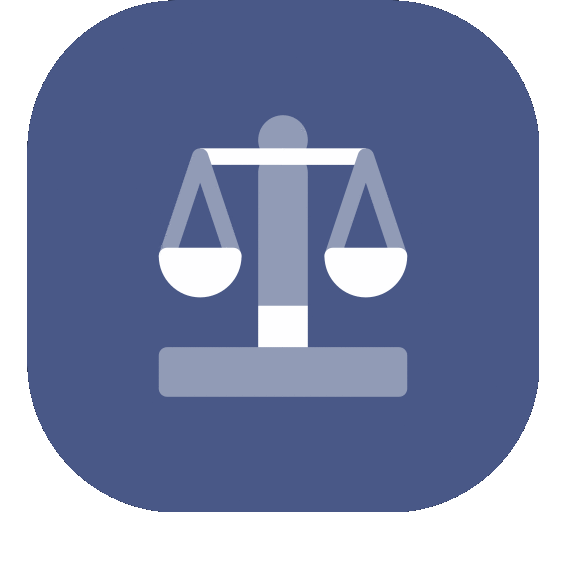White Hat Link Building Methods vs. Links to Avoid
There are several methods of obtaining links, but not all are considered Google-compliant. Learn how to recognize the difference between white hat and black hat link building methods.
One of the most foundational off-site strategies involved in SEO is link building. But not all link building is considered Google-compliant. It’s important for site owners to know the difference between white hat link building methods and linking strategies that they should avoid.
What is White Hat Link Building?
Link building is the practice of acquiring links, usually through content, on other websites. In every correlation analysis study of the factors influencing SERP rankings, links and link-related metrics have always had the highest correlation with ranking better on Google.
But link building has a fraught history of manipulation. Black hat SEOs once used unethical linking strategies to trick Google crawlers into thinking that their content was relevant to certain keyword searches when it wasn’t.
These strategies may have worked temporarily, but Google crawlers eventually got better at evaluating backlinks. They now penalizing those websites that engage in questionable link building practices.
Backlinks and the Penguin Update
In 2012, Google launched their Penguin Update. This update was designed to diminish the rankings of websites that engaged in manipulative link building strategies.
The Penguin algorithm has been updated several times since launch, with the most recent update allowing Penguin to evaluate sites in real-time. Google also makes regular minor updates to their algorithms, which are worth keeping track of. Check out our filterable History of Google Algorithm Updates for a full history.
Prior to to the Penguin update, websites could build their site authority and artificially boost their traffic by buying low-quality links or engaging in spammy linking tactics. But after the update went live, Google had much higher standards when evaluating links. If a site owner’s backlinks appeared to be spammy, they were less likely to rank.
In the worst cases, Google would de-index those websites that appeared to be purchasing links.
But as time went on, it was clear that not all site owners wanted spammy or toxic links to their websites. Still, they got them anyway. Because the truth is, site owners have little to no control of whether or not another webmaster links to their web pages. Thankfully, Google gave more options to site owners — like Disavow Files — to reduce the impact of toxic links on keyword rankings.
Not sure whether the links to your own website are high-quality or toxic? Use our Backlink Analyzer tool to get a better sense of the overall health of your backlink profile.
So Is All Link Building Bad?
Because of the complicated history of link building, it is easy to assume that there is no value to trying to get other people to link to your website. But this couldn’t be further from the truth.
Google knows that brands want to promote their content through strategies like PR, outreach, content marketing, and more. These strategies are considered “white-hat” link building, because they do link building the right way: Through original content and organic outreach.
As long as you do link building the right way, you can improve your Domain Authority scores and your overall ranking potential.
Link Building Methods: Good vs. Evil
There are several methods of obtaining links, and some are more effective than others. All of the methods we advocate for are white-hat methods. They will stand the test of time because they align with what search engines value long-term.
Be wary of black hat methods. They are shortcuts that look to manipulate search rankings in spammy and unethical ways. Strategies like keyword stuffing, cloaking, forum posting, backlink generators, comment section spamming, content spinning, or spammy link building with exact match anchor text. These methods, and other black-hat tactics, used to work, but can now get your website blacklisted or algorithmically penalized.
At LinkGraph, we’ve had to help webmasters through challenging remediations after black hat strategies resulted in rankings drops and losing over 50% of their traffic. With that disclaimer out of the way, let’s go through some winning strategies.
Healthy White Hat Link Building Techniques
Contextual Links On Reputable Publications
A contextual link is a link that appears inside relevant content that enhances or informs the reader. One of the most common examples of high-quality contextual links are hyperlinks within articles on blogs or publications with an engaged audience.
Well-placed contextual links can greatly improve a site’s trustworthiness. LinkGraph’s outreach-based link building campaigns are directed at emailing the editors and webmasters of high-quality publications with good organic traffic and pitching them original content.
Effective content marketing requires a large sample size of authoritative sites. As well as high-quality linkable collateral that is attractive to publishers. This is easily the most effective link building strategy today and will continue to stand the test of time.
Why? Because it adds value to the publications, readers, and the landscape of the internet overall.
Creating High-Quality Linkable Assets On Your WordPress Blog
This strategy is all about creating valuable content marketing assets that other websites will find and link to. Doing original research, like publishing white papers, technical case studies, free software tools or analyzers, and long-form, keyword-targeted content are all effective strategies.
Promoting these assets on social media to increase social signals through Facebook likes, comments, and shares are effective ways to grow your audience, increase brand mentions, and speed up your link velocity around these assets.
Many SEOs claim that creating content on your blog on a regular basis is very important. But we would argue that posting on a regular basis is only a good idea when the content you’re creating is actually getting traffic and social media engagement.
One great strategy to guide content strategy is the “skyscraper technique.” Identify a piece of content in your niche that has received a lot of engagement across social media, as well backlinks. Then, do your best to create an even better piece of similar content that lives on your own website.
HARO: Help A Reporter Out
(HARO) is a free database of sources for stories and a great way for potential sources to get media coverage. Once you sign up as a source, you’ll start receiving daily emails containing topics you can potentially speak on.
Any reply you send should answer all questions asked by the reporter in detail and be well-written. This raises your chances of being credited as a source. You’ll also need to include an author bio and link to your site to secure some exposure. Backlinks from high authority news sites are among the best you can get, which is why HARO is a great tool for link building.
Contributor Opportunities and Guest Posting
If you’re an industry expert with specialized knowledge, look for publications in your niche that could benefit from having you write pieces for them. TechCrunch, Forbes, and several other sites accept contributors and will often permit you a link from your author byline.
This strategy can help you secure some very high authority links that are otherwise very challenging to acquire. But it also requires hard work and perseverance.
In this age of the internet, high-quality journalistic outlets are inundated with myriad pitches each day from brands looking for press coverage. Nevertheless, it’s one that we’ve worked over the years to earn more link building opportunities at LinkGraph.
One important disclaimer here is to make sure you’re targeting sites that have relevance to your industry and get meaningful organic traffic, otherwise you might not see as much return.
Broken Link Building
This is a technique where you find a broken (dead) link and recreate content for the link. You then reach out to each site linking to the missing content that they can fix the broken link on their site by linking to your asset which has the same or similar information. For every webmaster that accepts, you’ve created a new backlink for your site.
The process of finding worthwhile dead links can be a bit cumbersome and time-consuming, but it’s still less effort than creating a new offsite piece for each backlink you want to earn. Bonus effect: adding additional content to your own site is likely to increase the number of keywords you rank for, and improve your relevancy as it increases your content depth.
Directories
A directory is simply a cataloging system that contains references to relevant resources. Some popular online directories include Yelp, LinkedIn, Google My Business, and Facebook. In SEO, directories are websites that accept submissions that allow you to create backlinks to your website.
Directories are great for local or niche marketing, and targeting your site toward relevant directories with detailed descriptions can be great for your traffic.
While there are some web directories that do provide do-follow backlinks, these are generally low-impact, tier 2 links, because the links they provide are low quality and transfer a minimal amount of PageRank.
Directories are a cornerstone of local SEO as they help a business get discovered by users using those directories — but compared to the potential traffic from Google, most directories are low-impact and low-return.
Local SEO
Local SEO, as the name suggests, refers to optimizing your website to rank better in local searches. Countless local searches are made every day, particularly on mobile devices. 50% of customers who conduct local searches visit a store that same day. Local searches are most frequently done to check the hours of a location or to search for specific services in the area.
To start taking advantage of local SEO, you’ll need to create a local landing page with keywords optimized for your area in the headline. The content of your landing page will generally include your opening hours, address, phone number, and a brief description of the products or services you provide.
To start gaining backlinks for your landing page, you’ll need to create a listing in Google Business profile. This gives you a chance to appear in the top three results in the Google map pack. These spots dominate all other search results. You can also gain backlinks from local news sources, by sponsoring local businesses, or by listing your business in local directories.
Image Link Building
These are popular for a variety of reasons. First, users generally love images that can break down complex content into easily absorbable chunks. Content creators also tend to like using images as much as possible for this reason. You can build your backlink portfolio by contributing images to other sites that link back to your page.
You can create new images by either revamping outdated ones or by converting content into images yourself. Providing unique and valuable images to big influencers can be a great way to promote your content. This Moz guide can show you more on how to create image links.
Links to AVOID
Link Swaps (BAD!)
Also known as link exchange, this is a situation where you work with another site to provide backlinks for each other. While there may be some rare instances where this isn’t a bad idea, such as if they are a high-quality site that is relevant to your niche, the practice is generally best avoided.
Sites asking for link swaps are often low quality or will be unrelated to your topic. And backlinks like this do more harm than good.
What type of swap that is considered “white hat” is a guest blog swap. Again, using original content is the key to making links valuable. Instead of a link swap, see if you can both contribute high-quality pieces of content to each other’s websites.
Forum/Comment Spam (BAD!)
Forum and comment spam doesn’t necessarily have a strict definition, but spam is largely considered anything that doesn’t ask a relevant question or provide any appropriate information.
It’s easy for bloggers and site owners to try and promote their sites with spam in forum threads to get some free links, but the practice isn’t a good one.
Firstly, it won’t provide particularly valuable links for your profile. Secondly, it’s disruptive to the forums you’re spamming on. Stopping comment spam is a top priority for many forum moderators, and any links you do make are likely to be removed.
Exact Match Anchor Text Links (BAD!)
Anchor text is simply the clickable text in a hyperlink, typically appearing blue and underlined. Anchor text can say anything, though it’s generally best if the wording is relevant to the destination page.
An exact match is when the anchor text mirrors the keyword your trying to rank for. This is generally considered a bad practice for a few reasons. It clearly signals an attempt at link building, and the links often look unnatural. Too many of these could even result in search engine penalties.
Also, users don’t respond as well to exact match links anymore. They see these more like advertising then ways to obtain valuable information. When in doubt, focus on linking to your homepage or blog posts. Then, use branded anchor-text so it doesn’t look like you’re trying to manipulate rankings for a specific search term, especially ones with higher CPCs.
Linkable Content
Securing high-quality backlinks requires high-quality linkable assets that are well-researched and add meaningful value for readers and make other sites want to link to you.
In today’s SEO world, there are no shortcuts for creating great content. Depending on your industry, this could be in the form of well-researched blog posts, engaging podcasts, infographics, writing white papers and case studies. Using your unique, relevant, and useful content if you really want your efforts to pay off.
You’ll also have to link to outside sources in your own content to support your points and build trust with your audience. The following are some things to keep in mind when choosing content to link.
Relevancy
When making your content, you have to ensure that it’s valuable to your target audience. This requires a deep understanding of your audience and their problems. Anything you link for them in your content should also be relevant to your audience and your efforts. Good links could include anything from reviews of your products/services, material that backs up your points, or stories about events in your industry.
Link authority
Naturally, when choosing your links, you need to make sure they’re actually helpful for your rankings. You’ll want to check the domain authority of any outside links you’re targeting. The more authoritative sites you get links from, the more your own authority will increase.
Site Traffic
It’s long been a matter of debate within the SEO community as to whether linking to pages that have high traffic provides any concrete advantages. On the surface, it would seem that linking a page with a high volume of traffic would increase your authority, and therefore your rankings, but this isn’t necessarily the case.
In fact, an ahrefs traffic study found that referring domains with high traffic often didn’t correlate with higher traffic than the total number of referring domains in web pages. This certainly doesn’t mean that referring link traffic isn’t at all important for rankings. But it does suggest it shouldn’t be your main concern.
Tips for Earning White Hat Backlinks
Earning high quality backlinks can often be difficult, particularly if you’re trying to build them all on your own. Many white hat link building strategies won’t cost you anything more than a bit of time and effort to implement.
User-Centric content
As previously stated, it’s crucial that you make all of your content relevant to your target audience. But you can go a step further! Create content specifically designed for the user’s convenience.
One great way to do this is by creating video content that’s useful for your audience. Online video is staggeringly popular with 55% of people watching videos online every day. This is especially true of mobile users, and over 90% of mobile users report sharing videos with friends. Your video content could include tutorials, product demonstrations, or informational videos appropriate for your niche. Shared videos give your brand more exposure and can link back to your site.
It’s also a good idea to put images into your content whenever possible. One easy way to do this is by placing infographics in your written content to sum up concepts and engage your audience. These are simple to make with Adobe Spark or other online infographic makers.
E-conferences and Industry Networking Sites
Arguably one of the best ways to get high quality, white hat backlinks are conferencing and networking sites. Search specifically for e-conferences in your space, and make a list of networking sites and forum sites used most heavily in your industry.
If you’re having trouble take a look at prominent people from your industry on LinkedIn and see what groups they’ve joined and events they’re attending. Conference/networking sites can be a goldmine for content-submission based link building, and can lead to additional opportunities as you network – including guest posting on the blogs of other people you meet, or being interviewed.
Community Involvement
If you want to spread your name around more, it’s a good idea to become more involved in your online community. This can include more activity on social media, but it can be even better to engage more directly.
Search forums for questions your business can answer, and start answering them. You might also consider using surveys for multiple purposes. Firstly, surveys can be great tools to gather insights from your current customers/users to gauge their satisfaction and discover ways you can improve.
You might also create some surveys with questions relevant to your industry and post them around online to see if your business matches up with your audience’s expectations. You can create your own surveys online with services like Survey Monkey, Typeform, and more.
Backlink Cleanup
Now that you have some strategies for new backlinks, it’s also important to know how to clean up any bad links you might have. You can use the link building tool in your Search Atlas dashboard to get an idea of how many harmful links your content may have before cleaning them up.
Once you’ve identified any bad links, you have a couple of options for dealing with them. The simplest way is to find the contact information for the webmaster of the site you have a bad link on and request for them to remove it. If they are unresponsive, then you’ll have to resort to using Google’s disavow tool.
This is typically seen as a last resort and is only recommended if you’re certain you have bad links. The tool basically tells Google not to count disavowed links toward the ranking of the page. This won’t affect any Google penalties you may have already incurred for toxic links, but it can protect against getting any more.
If you need some help with identifying and responding to these links, schedule a meeting with one of our SEO strategists to learn more about our backlink audits.

















































































